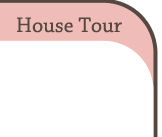I have been committed to cloth diapering right from the start. From my research before my baby was born, I found that using my own cloth diapers was a great way to both save money and stop sending massive amounts of diapers to the landfills at the same time. I'm a real tree hugger, so hours spent researching, buying and washing cloth diapers is a small price to pay for the payoff of helping the environment.
Working in India, I once went out with my students to clean up a huge pile of trash near our village. As we cleaned, we came across many used disposable diapers. It really was a very disgusting job, one that I would not want anyone to have to repeat. As I thought about what diapers my baby would use, I realized I did not want to contribute to that sort of mess. Here in America, I will probably never have to clean up disposable diapers from the landfills, but I hate to think they are there, and subsequent generations will have to deal with them one day.
Cloth diapering is not for the feint of heart. It is a lot of work. You have to be comfortable touching wet/dirty diapers, being around smelly diaper pails, and that sort of thing.
As I tried to decide what kind of diaper to use for my baby, what I learned is that it is very hard to know what will work for your baby until that baby is born. There were also not a lot of reviews a year ago. I tried to get a bunch of different types of diapers in the beginning so that I could see what worked. But somehow this never happened. Although I registered for a bunch of different cloth diapers, no one gave me any, except for my mother-in-law who bought a couple gDiapers. I guess it is just not fun to give a new mom diapers.
After talking to a coworker who did the whole cloth diaper regimen with her two children, I decided that the best two brands to focus on were gDiapers (they are the only ones sold at BabiesRUs) and Bum Genius.
gDiapers: Review
Pros:
1.) gDiapers are absolutely the cutest thing in the world. |
| {source} |
2.) They are also very trim making it a bit easier to fit my baby into normal size clothes. I found that because cloth diapers are more bulky, you have to dress your baby in larger sizes.
 |
| {source} |
 |
| {source} |
4.) The covers, plastic bag inner liner, and cloth lines are all breathable. This helps reduce diaper rash.
5.) gDiapers are also a bit cheaper in the beginning. I bought 8 covers, 24 liners and one pack of extra bags totaling about $250.
Cons:
1.) They don't fit my baby very well. My boy is quite chubby, so the covers are tight, and we got quite a few blowouts before I figured out how to put them on correctly.2.) The diapers come in several sizes. This means that as my baby grew, we had to upgrade the whole system, thus making the fact that they are cheaper at first, not so helpful later. Once our baby made it to the Medium size (pretty quickly because he was so chubby), it gets a bit better, because the cloth liners and bags fit cover sizes M-XL.
3.) The diaper is not very absorbent. One big pee and my little guy is wet. I have to change him every two to three hours when he wears these. When he does #2 I have to change him right away (he makes this very clear to me).
4.) The covers fade fast. I dry them on a line in my house (in the shade), but they still faded quite quickly.
5.) In order to get the good price on covers, we went with a pack of six covers, but they only came in green and orange (their signature colors) so besides the red and blue ones we bought to round out the set of 8, our color options are pretty boring. If we buy more for the next size we plan to spend a bit more and get a rainbow of colors.
Bum Genius:
 |
| {source} |
Pros:
1.) One size fits all. The diapers are designed to grow with the baby. There are lots of snaps to change as the baby gets bigger.2.) Very absorbent. My little one stays dry all night long in one diaper. With the wicking inner layer, he does not feel the wet when he goes.
3.) The diaper does not leak. Because the covers are waterproof, and large enough to fit my boy well he does not get wet even when he wears the same diaper for a long time.
4.) They also come in lots of cute colors. We have a black one with math on it that my husband loves.
Cons:
1.) Every time I have to change him I have to use a whole new diaper. Meaning the cover and the insert.2.) The covers require air drying, and take a while to dry.
3.) The liners stain. But they are inside the diaper, so only I see them.
4.) It is not breathable. The covers are totally water proof. This causes more diaper rash.
5.) Each diaper is quite expensive. Each diaper comes with one liner and one newborn insert, but is $19-24 a piece. My baby went through 12 diapers a day the first four months (and really, sometimes still does), so I needed 15-24 diapers total. 20 diapers at $20 each is $400. That's a lot to shell out all at once. This is a one time investment, but was too much for us right after our baby was born (we also needed a new couch).
6.) Snaps. Changing my baby's diaper in the middle of the night, half asleep and in the dark, is hard with all those snaps.
7.) They are quite bulky, much more bulky than the gDiapers.
The Verdict:
If I could go back in time I might buy all Bum Genius, but I might not. In the long run, it is the best option financially. However, now that we have used gDiapers I also see the value in this system. My baby has very sensitive skin, so I worry that a non-breathable diaper would cause him worse diaper rash than he already gets. gDiapers are better when we go out as well because they are smaller, and more easy to pack in a diaper bag to wash later.
I use gDiapers during the day, and Bum Genius overnight. This works for us.
I didn't mention the savings over disposable. If I had to buy diapers for my boy I would have to buy 10 packs of diapers a month at $15 each. So that's $150 a month. My son is almost six months old so I would have spent $900. Now, I might be able to get them cheaper, and I might be able to stretch out changing him, but it is still a significant savings. Not to mention, I'm still using the current gDiapers we bought four months ago, and won't have to get the next size up for a while still. Also, I'm saving the cloth for my second child, meaning the savings doubles because I won't have to invest in diapers at all by then. Really it makes a lot of sense.
Do you cloth diaper? Some people think I'm crazy, and others admire my commitment to cloth diapering. what is your opinion?





































































